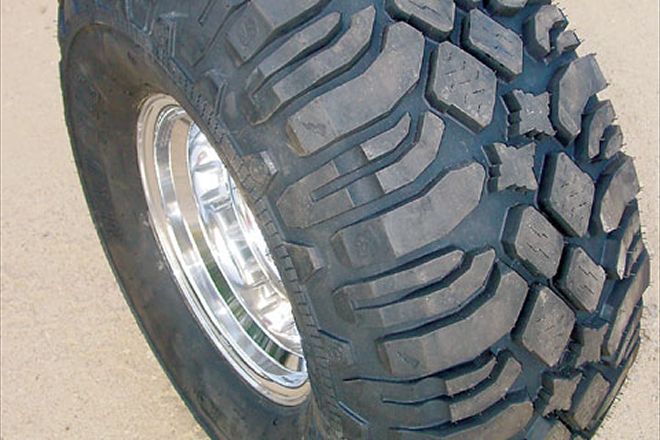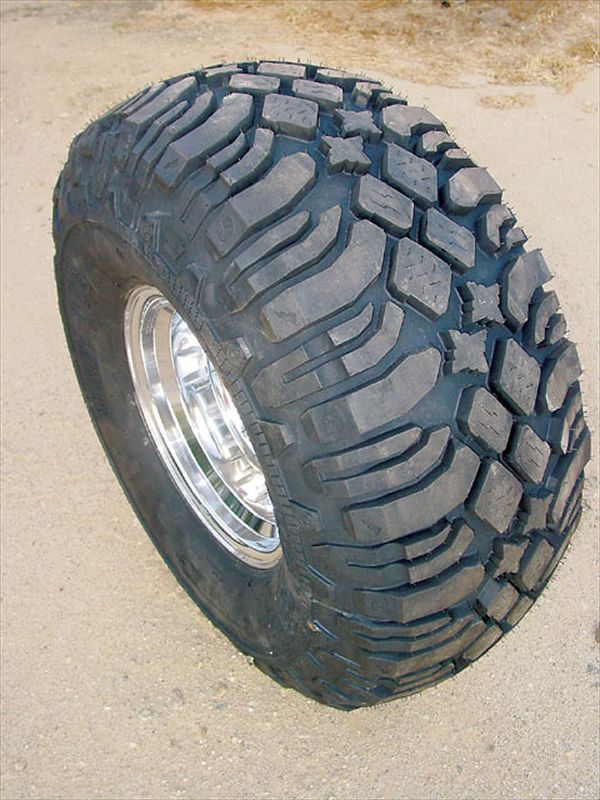
Faithful readers might recall the initial tests of tires in the Pit Bull line: The then-all-new Rocker in the May '05 issue, which was followed by the Growler in February '06. Well, faithful or not (that's really between you and your significant other, anyway), back then we fully suspected that it's the beautifully rounded carcass of this bias-ply tire that makes it work so well on the trail, and that the tread design is almost inconsequential in comparison. Now, nearly a year and many pleasurable trails later, we still stand behind that statement, but that doesn't mean that all Pit Bull tread designs are completely interchangeable. Oddly enough-and this isn't the first time Pit Bull tires have surprised us-based on looks, the Mad Dog is middle-of-the-pack in aggressiveness, yet it may be the most street-friendly tread of the three.

Compared to a radial, as a rule a bias-ply tire is a loser on pavement. Those very same qualities that allow the tread to flex so nicely and provide traction over trail obstacles are at work on the asphalt too, and the resulting tread squirm affects rolling resistance, wear, and handling. The very generous tread arch that helps the Pit Bull tires perform in the dirt doesn't exactly help matters. Still, aired up properly for street use, the Mad Dog is definitely no dog on the street. Within the limits of our test vehicle anyway, this Dog performed admirably even on twisty two-lane roads. The tread's load transitional characteristics are quite good, promising a decent tread life, and handling in general was impressive-for a bias-ply tire on this vehicle. A bit of Detroit Locker bark in the corners is much better than howling at speed, we think.
The Mad Dog delivered a smooth, comfy, and quiet ride (once the morning flat-spotting goes away) with only a 27-pound average in Road Force Variation as measured on a Hunter GSP 9700. While it was the highest RFV for the trio, it's a darn good number for a 35-inch tire, and overall, Pit Bull tires are very, very true. That's a really good thing for the times you end up driving these great trail tires on the highway.
We had mounted the 'Dogs on Mickey Thompson 15x10 Classic II wheels, and if you read our "Built-In Bead Breakers" (Feb. '06), you already know that this turned out to be a bum combination. There's nothing inherently wrong with the lightweight and stylish wheels, or the tires-except, maybe, the rim protector---but they are a bad match for those who like to air down for trail driving. Therefore, we stayed at a (for us) very conservative 8 psi front and 6 rear, compared to our normal 2 to 5 psi. That's not much below the 12 psi front and 10 psi rear we usually run on the street with this 3,200-pound vehicle.
Running the higher inflation paid off in that we never did lose a bead, despite the "doomed combo," but it sure seemed to influence traction. Except on hard-packed dirt, where the higher contact pressure worked in our favor, the Mad Dog didn't do quite as well as the Rocker or Growler did. Again, we don't think that the tread has an awful lot to do with the Pit Bull tire's trail performance, but either the Mad Dog's street manners were offset in the dirt, or it was a function of running higher inflation pressures. Our educated guess is that too much air kept the 'Dog from doing its best.
Using shameless bribery, we finally found out why the unusually soft (about a 60 durometer) Pit Bull tire's treads won't readily tear off or lose their sharp edges. In retrospect, the answer was obvious-having built tractor pulling tires for years, Pit Bull Tire Company has learned how to manipulate those polymers to get a compound that works on the trail without tearing.
With three different tread designs on the same very flexy casing to choose from in the Pit Bull line, it's mostly a matter of picking a tread design that suits you. For mud, the Rocker may be the best bet, and available in 16 sizes from 33x13.50-15 to 39x16.50-17, it offers the most choices. Lighter vehicles may be best off with the directional Growler, as its smaller tread blocks allow even greater conformability, but sizes are still limited to 35x14.50s in 15-, 16-, 16.5- and 17-inch rim diameters.
For now, the Mad Dog is offered in the same sizes as the Growler, and it might have an edge for street use over its litter mates. Either way, there's not a bad dog in the group, assuming that you like tires that conform like crazy and consequently work very well on the trail, yet seem to last and are well behaved on the street. For a bias-ply, that is.
Tire: Pit Bull Mad Dog
Size: 35x14.50-15LT
Type: Bias ply
Load range: C
Max load (lb @ psi): 2,725 @ 30
Sidewall: Four-ply nylon
Tread: Four-ply nylon
Approved rim (in): 10-12
Tread depth (in): 22/32
Tread width (in): 11.7
Section width (in): 14.7
Overall diameter (in): 35.5
Static loaded radius (in): N/A
Revolutions/mile: N/A
Weight (lb):70
Test vehicle: Jeep CJ, 3,200 pounds